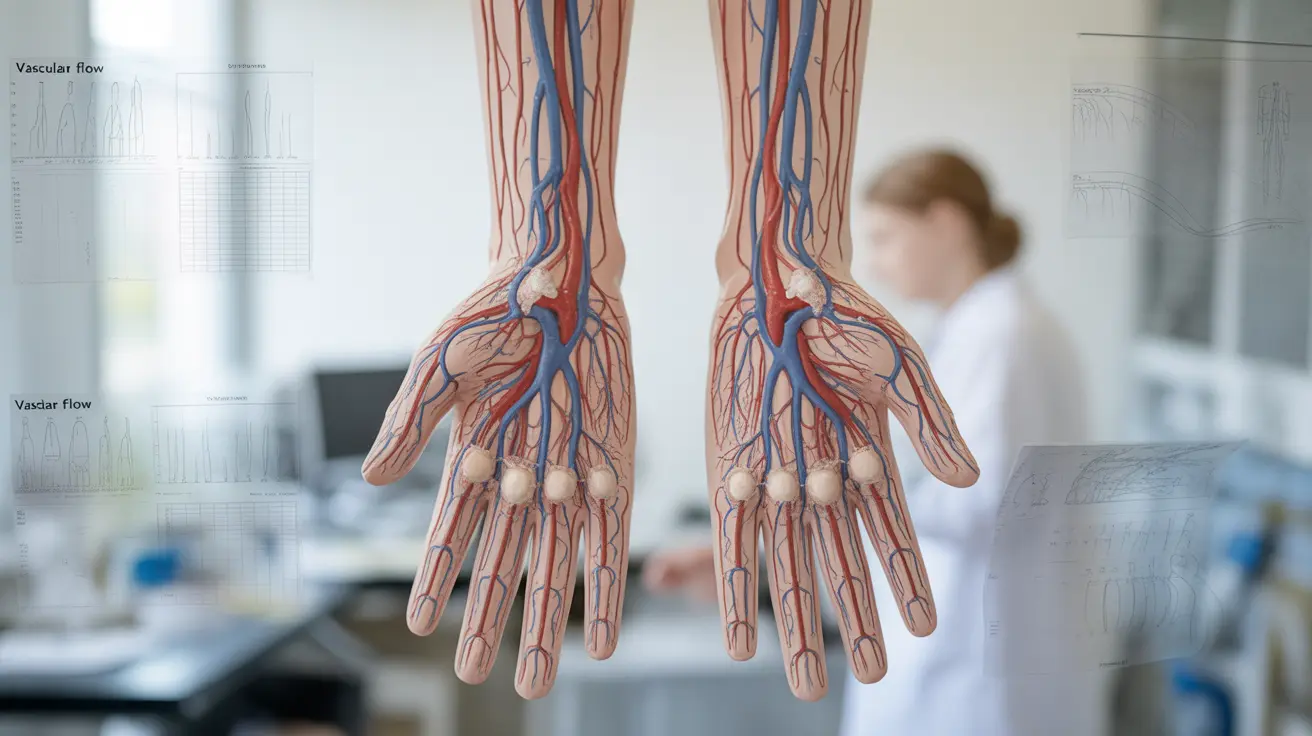If you frequently experience cold hands and feet, even when the temperature around you is comfortable, you're not alone. This common condition can range from a minor inconvenience to a sign of an underlying health issue. Understanding why your extremities feel cold and knowing when to seek medical attention is crucial for your overall well-being.
While occasional cold hands and feet are normal responses to low temperatures, persistent coldness might indicate circulation problems or other medical conditions that require attention. Let's explore the various causes, treatments, and prevention strategies for chronically cold extremities.
Common Causes of Cold Hands and Feet
Several factors can contribute to persistently cold hands and feet:
Poor Circulation
Reduced blood flow to your extremities is a primary cause of cold hands and feet. This can result from:
- Sedentary lifestyle
- Smoking
- High blood pressure
- Atherosclerosis
- Blood vessel constriction
Medical Conditions
Various health conditions may cause cold extremities:
- Raynaud's phenomenon
- Peripheral artery disease
- Hypothyroidism
- Diabetes
- Anemia
Nutritional Deficiencies
Certain vitamin and mineral deficiencies can contribute to cold sensitivity:
- Iron deficiency
- Vitamin B-12 deficiency
- Vitamin D deficiency
- Magnesium deficiency
Treatment Options and Management Strategies
Medical Treatments
Depending on the underlying cause, your healthcare provider might recommend:
- Prescription medications for Raynaud's disease
- Blood pressure management medications
- Thyroid hormone replacement therapy
- Iron or vitamin supplements
Lifestyle Changes
Several lifestyle modifications can help improve circulation:
- Regular exercise, especially cardiovascular activities
- Quitting smoking
- Maintaining a healthy weight
- Stress reduction techniques
- Proper hydration
Prevention Tips
To help prevent cold hands and feet:
- Wear warm, layered clothing
- Keep your core body temperature stable
- Avoid prolonged exposure to cold
- Use hand and foot warmers when necessary
- Practice gentle exercises to promote circulation
When to Seek Medical Attention
Consult a healthcare provider if you experience:
- Persistent coldness that interferes with daily activities
- Color changes in your fingers or toes
- Numbness or tingling
- Sores that don't heal
- Severe pain in your hands or feet
Frequently Asked Questions
What are the common causes of persistently cold hands and feet, and when should I seek medical attention?
Common causes include poor circulation, Raynaud's phenomenon, anemia, and thyroid problems. Seek medical attention if you experience persistent coldness, color changes, numbness, or non-healing sores.How can I manage or treat cold hands and feet if they are caused by poor circulation or Raynaud's disease?
Management strategies include regular exercise, maintaining warm body temperature, wearing appropriate clothing, and possibly medication prescribed by your healthcare provider. For Raynaud's specifically, avoiding triggers like cold temperatures and stress is crucial.Can anemia or vitamin deficiencies like iron or B-12 contribute to feeling cold in the hands and feet?
Yes, both iron-deficiency anemia and B-12 deficiency can cause cold extremities. These conditions reduce oxygen delivery to tissues, leading to temperature regulation issues. Proper supplementation under medical supervision can help address these deficiencies.What lifestyle changes can help prevent or reduce coldness in the hands and feet?
Key lifestyle changes include regular exercise, maintaining a healthy diet, staying hydrated, quitting smoking, managing stress, and wearing appropriate clothing. Regular movement throughout the day also helps improve circulation.How does Raynaud's phenomenon differ from other conditions that cause cold hands and feet, such as peripheral artery disease?
Raynaud's phenomenon typically causes color changes in fingers and toes in response to cold or stress, often affecting both sides equally. Peripheral artery disease usually develops gradually, causes pain during activity, and may affect one side more than the other.




